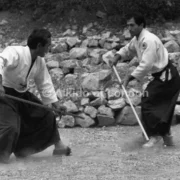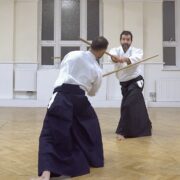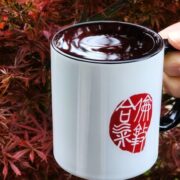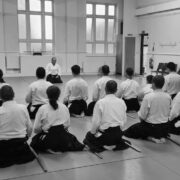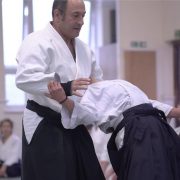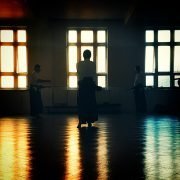AIKIDO SENSEI AND SEMPAI…
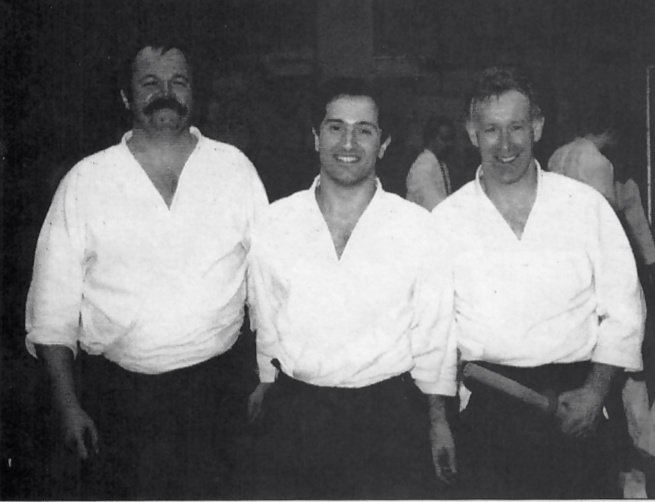
Recollections Of My First 25 Years On The Mat: by Arthur C. Lockyear
Anyone present at the 1991 Budo Sai Festival in Durham, England, would certainly remember the explosive demonstration given by Ichiro Shibata Sensei, 6th Dan of the of the Berkley Aikikai, California. Whilst only of brief duration, Shibata’s dynamic and powerful display brought the relationship of Aiki body art and Aiki weapons to everyone’s attention in the most positive manner. His two uke (‘receivers of technique’), Tony Cassells and Donovan Waite were, I think, taken to their limits by his martial and pragmatic performance. Shibata’s economy of movement and incisive use of tegatana (hand blade) made the saying of Chiba Sensei “We move like a swordsman without having a sword” come vividly to life.
In the week leading up to the Budo Sai, we enjoyed an Aikido course led by Yoshimitsu Yamada, 8th Dan, of the New York Aikikai, Takeji Tomita Sensei, 7th Dan, of Stockholm Takemusu Aikido Dojo, and, of course, Shibata Sensei. During this course Shibata displayed his distinctively powerful style of Aikido, and taught his classes in a very logical manner.
Shibata’s Aikido is marked by his use of a long and low triangular posture (sankakutai) in most of his techniques. The use of this quite unusual-looking kamae (stance) is a major part of the body conditioning espoused by both Chiba and Shibata. I do not altogether understand its relevance, well, actually, l don’t understand it at all, but there are times when one just has to get on with it and take the sensei at his word. Despite this low posture, Shibata moves easily and naturally in his technique, and is able to accelerate his body movement smoothly and to great effect. For me the other outstanding quality of his Aikido is his use of tegatana both as an atemi (a strike) and as a block or deflection. In this he employs the full potential for effectiveness, and the maximum degree of control.

lchiro Shibata was born in 1950 in the town of Fukuoka in Northern Kyushu, and commenced a notable Martial Arts career by studying Sumo, Kendo and Judo as a schoolboy. He first practised Aikido in 1966 under the auspices of Kuroishi Sensei and made his first visit to the Hombu (headquarters) Dojo two years later. During this visit the young Shibata was fortunate enough to see the founder of modern Aikido, Morihei Ueshiba O’Sensei. Influenced by his month long stay at the Hombu, Shibata moved to Tokyo to pursue his Aikido and, in 1972, became an uchi deshi (live-in student).
Shibata’s main influence at this time was, of course, the present doshu (or headmaster) Kisshomaru Ueshiba Sensei, the son of the founder. Although Shibata states that he was to some extent influenced by all of the Shihan at Hombu, I feel that the rather boisterous style of Sadateru Arikawa Sensei, 8th Dan, would have appealed more strongly to him.

